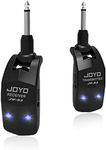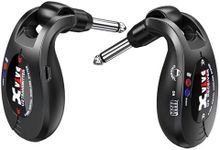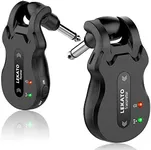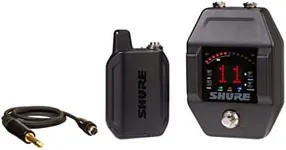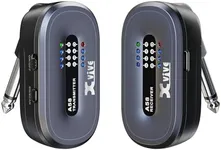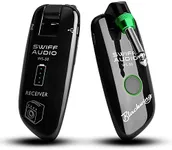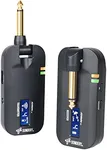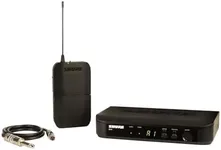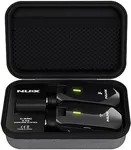Buying Guide for the Best Wireless Guitar Systems For Bass Guitars
Choosing the right wireless guitar system for your bass guitar can greatly enhance your performance by providing freedom of movement and eliminating the hassle of cables. When selecting a wireless system, it's important to consider several key specifications to ensure you get the best fit for your needs. Understanding these specs will help you make an informed decision and find a system that delivers reliable performance, sound quality, and convenience.Frequency RangeThe frequency range of a wireless system determines the range of audio frequencies it can transmit. This is important because bass guitars produce lower frequencies than regular guitars. A system with a wide frequency range, especially one that covers the lower end, will ensure that the deep tones of your bass are transmitted accurately. Look for systems that specifically mention compatibility with bass guitars or have a frequency range that goes down to at least 20 Hz.
Operating RangeThe operating range is the maximum distance over which the wireless system can transmit a signal without losing quality. This is crucial for live performances where you might move around the stage. Systems with a short range (up to 50 feet) are suitable for small venues or practice spaces, while medium range systems (50-100 feet) are good for mid-sized venues. For large stages or outdoor performances, look for systems with a long range (over 100 feet) to ensure consistent signal transmission.
Battery LifeBattery life indicates how long the wireless system can operate on a single charge or set of batteries. This is important to avoid interruptions during performances. Short battery life (up to 4 hours) might be sufficient for practice sessions, while medium battery life (4-8 hours) is better for rehearsals and small gigs. For long performances or tours, look for systems with long battery life (over 8 hours) to ensure you don't run out of power mid-show.
LatencyLatency is the delay between when you play a note and when the sound is heard through the amplifier. Low latency is crucial for maintaining the timing and feel of your performance. High latency (over 10 milliseconds) can be noticeable and disruptive, especially for fast playing styles. Look for systems with low latency (under 5 milliseconds) to ensure a seamless playing experience.
Build QualityBuild quality refers to the durability and robustness of the wireless system. This is important for ensuring the system can withstand the rigors of frequent use and transportation. Systems with plastic housings are generally lighter and more affordable, but may not be as durable. Metal housings offer better durability and are more suitable for professional use. Consider your usage patterns and choose a system that can handle your performance environment.
Ease of UseEase of use encompasses how simple it is to set up and operate the wireless system. This is important for minimizing setup time and avoiding technical issues during performances. Systems with automatic frequency selection and simple controls are ideal for beginners or those who prefer a hassle-free experience. More advanced systems may offer additional features but can be more complex to operate. Choose a system that matches your technical comfort level.
Interference ResistanceInterference resistance refers to the system's ability to avoid signal disruption from other wireless devices. This is important for ensuring a clear and uninterrupted signal. Systems operating on UHF bands generally offer better resistance to interference compared to VHF bands. Digital systems also tend to have better interference resistance. If you perform in environments with many wireless devices, prioritize systems with strong interference resistance.
